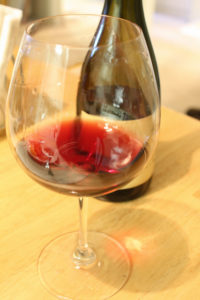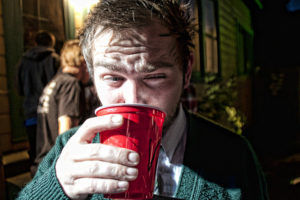It’s very difficult, if not impossible, for one single person to thoroughly review every single piece of peer reviewed literature related to wine that is published every day. This Wine Literature Review Lightning Round series presents three new papers (within the past year or two) in one post by briefly summarizing the research and linking to the abstract in order for you to pursue further if you’re interested. If there is enough reader interest, I can review any of the papers introduced to you in this post in a more critical assessment.
SENSORY MATTERS
“Colour as a driver of Pinot noir wine quality judgments: An investigation involving French and New Zealand wine professionals”, published in March 2016 in the journal Food Quality and Preference, aimed to provide evidence to either support or refute the common assumption that the color of a wine influences quality judgements by wine professionals. The authors state that while it has been shown that wine color is associated with wine flavor intensity in several red wine varieties (like Cabernet Sauvignon and Merlot) by wine consumers, scientific studies on the influence of color on Pinot noir wine quality

Photo courtesy Flickr user Naotake Murayama
judgements by professionals are lacking.
With consumers, one study found a positive association between wine color and the overall liking of a wine, while another study found that consumers associated a “nice appearance” (assuming color is involved with this) led to feelings of “sensual pleasure”. While studies focused on wine judges and how color influences their judgements are few and far between, the one study cited in this paper found that Australian Cabernet Sauvignon and Shiraz wines that were scored higher overall by judges also happened to have higher color scores as well.
Brief Methods: 23 French and 23 New Zealand wine professionals participated in this study, evaluating Pinot noir wines from both Burgundy and New Zealand. Participants were asked to judge various varietal characteristics (including color) and to give an overall quality assessment for each wine. Participants judged the wines in both standard clear glasses as well as black glasses where color could not influence judgement.
Brief Results: Interestingly, results showed that color did NOT play a major role in determining the overall quality of the Pinot noir wines. In fact, the most important factor influencing the quality ratings of the wines was “balance”. In regards to color, the only significant finding in this study was cultural in nature, specifically, the French judges tended to use color in making their quality judgements more often than the New Zealand judges, and New Zealand judges tended to associate brighter colors with higher quality in Pinot noir wines.
Though the author’s hypotheses that wine color influences quality judgements by wine professionals were not supported in this study, color did seems to play a minor role in the evaluation of the wines, particularly in regards to cultural differences. Across all wine professionals (or in this case, French and New Zealanders), color was not a significant factor, but across specific cultures, color did play a minor role in determining overall wine quality judgements.
WINE BUSINESS/SALES
“The influence of size on winery performance: Evidence from Italy”, published online in March 2016 in the journal Wine Economics and Policy, aimed to evaluate the effect of winery size on “economic performance” focusing on Italian wineries. Economic theory suggests that the bigger the company, the more efficient it likely is, and also the greater the profits based upon economies of scale alone. Having a larger company may also make it more difficult for the “little guys” to break into the market, allowing for greater sales and overall profits by the larger company. Despite these theories, the evidence for any causal relationship between company size and economic performance is few and far between.
Brief Methods: The researchers used both traditional and non-parametric methods for determining the relationship between winery size and economic performance. Specifically, traditional measure included returns on assets (ROA), returns on equity (ROE), returns on investment (ROI), and labor productivity. Efficiency was measured by the Data Envelopment Analysis method.

Photo courtesy Flickr user Jocelyn Kinghorn
Wineries included in this study were required to have a positive turnover in 2013 and could only sell wine (i.e. no spirits). After these considerations, a total of 723 Italian wineries were included in the analysis.
Brief Results: Overall, results showed that winery size had a positive influence on economic performance. In other words, the bigger the winery, the better the economic performance. This result was statistically significant for ROA, ROI, labor productivity and efficiency.
Basically, the bigger the winery, the more resources and “manpower” they have to throw at various things. Bear in mind that this analysis only included Italian wineries and the results may or may not be generalizable to wineries in other parts of the world.
HEALTH
“Implicit and explicit drinker identities interactively predict in-the-moment alcohol placebo consumption”, published online in April 2016 in the journal Addictive Behavior Reports, aimed to evaluate how one’s perception (i.e. implicit and explicit identities) of his/her drinking habits affect the amount of alcohol consumed in a sitting. In other words, how does being actively labelled as a “drinker” by themselves or by society affect their consumption behavior (do they drink more? More often? etc)? Using college students as an example, someone blatantly telling the student he/she is a drinker (or the student admitting it his/herself) would be an example of an “explicit identity”, while the unspoken understanding that college students are more or less expected to drink more than other populations would be an example of an “implicit identity” (more of an unconscious phenomenon). Previous research has found links between this label and consumption and willingness to engage in risky behaviors, however, to date only self-reported questionnaires have been utilized to evaluate this issue.
Brief Methods: 40 college students participated in this study, and both their implicit and explicit identities associated with being a drinker were determined. Participants were

Photo courtesy Flickr user Kyle Sullivan
asked to perform a Pouring Taste Preference Task which required the consumption and evaluation of a non-alcoholic wine. The amount poured was used as the behavioral measure of intention, and the amount consumed was (obviously) used as the behavioral measure of consumption.
Brief Results: Results were somewhat mixed in that explicit identities were found to predict one’s attitude toward drinking but not the amount poured, while implicit identities predicted the amount consumed. These results suggest that explicit identities predict attitudes but not behavior. In other words, they may “talk the talk”, but they don’t necessarily “walk the walk” when it comes to outwardly being labelled as a drinker and how this associates with the amount of alcohol consumed in a sitting.
On the other hand, results showed that implicit identities predicted the amount consumed. Neither identity predicted the amount poured. More work needs to be done to better understand this phenomenon, but it appears from this study that implicit identities may influence how much alcohol is actually consumed in the moment than explicit identities. It should be noted that these results may not be generalizable to the general public, since the participants were college students who alcohol consumption behavior is not exactly comparable to other populations.
